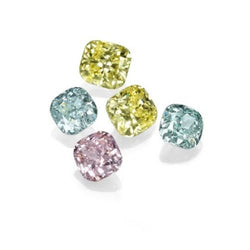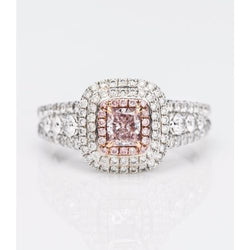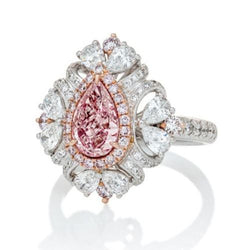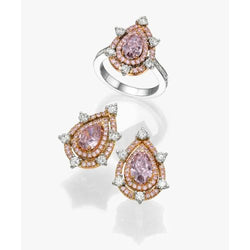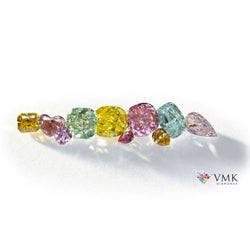About Sapphires
Sapphires are a form of gemstone-quality corundum, which is aluminum oxide that has crystalized as a result of pressure and heat deep underneath the Earth’s surface. Inclusions of small amounts of other elements, such as iron and chrome, can color the sapphire. Corundum is the third-hardest mineral known, coming after diamonds and moissanite (silicon carbide) on the Mohs Scale, with a rating of 9. Because it is so hard, it has historically been used as an abrasive. Sapphires are the birthstone for September and the gem of the 5th and 45th wedding anniversaries. Sometimes a “star effect” called asterism is caused by light traveling perpendicular to the faces of from tiny, needle-thin inclusions oriented in 2, 3, or 6 intersecting bands.
Color
While a classic sapphire has a velvety blue color, it comes in a range of other colors, called “fancy sapphires”, that can be violet, green, yellow, orange, pink, purple, and a unique salmon or guava color called padparadscha. Gemstone-quality corundum in any color except for red is considered a sapphire. Red corundum is considered a ruby. Heat treating is a widely accepted industry practice for improving the clarity and strengthening the color of sapphires, as it is considered a continuation of the processes that occur underground. However, the fine quality sapphires sold by VMK do not undergo any heat treatment, which makes them even more rare and valuable. An independent laboratory such as the GIA can verify that these stones are not heated.
Cut
Sapphires are typically cut with a brilliant pattern on the crown and a step cut on the pavilion. Properly cut sapphires will be symmetrical and cut more deeply when the stone is light, so as to deepen the color, or with a more shallow cut in dark stones.
Carat Weight
Like emeralds, sapphires are less dense than diamonds, and therefore a 1-carat emerald will be a larger size than a 1-carat diamond.
Cost
The most valuable sapphires have a vivid color saturation, as strong as possible without compromising its brightness, regardless of its hue. Sapphires with more uniform color distribution are also valued than those with zones of different colors. In a white, or colorless sapphire, the closer the corundum mineral comes to having no color, the more valuable it is. Inclusions can either reduce or increase the value of a sapphire depending on how they cause light to scatter.
Famous Sapphires
Duchess of Cambridge Kate Middleton’s engagement ring consists of 14 solitaire diamonds surrounding a 12-caraot oval blue Ceylon sapphire set in 18-karat white gold. It was originally the engagement ring of the late Princess Diana. The Star of Asia is one of the world’s largest blue star sapphires, weighing 330 carats. The Star of India, a 563.35-carat sapphire is a nearly flawless dark purple sapphire with milky stars on both sides, made front-page headlines in 1964 when it was stolen from the New York Museum of National History along with other famous gemstones.

 Pink
Pink Yellow
Yellow Green
Green Chameleon
Chameleon Blue
Blue Purple
Purple Violet
Violet Red
Red Orange
Orange Brown
Brown Gray
Gray Black
Black White
White Colorless
Colorless Radiant
Radiant Cushion
Cushion Pear
Pear Round
Round Heart
Heart Half Moon
Half Moon Baguette
Baguette Emerald
Emerald Asscher
Asscher Princess
Princess Marquise
Marquise Oval
Oval Shield
Shield Trapeze
Trapeze